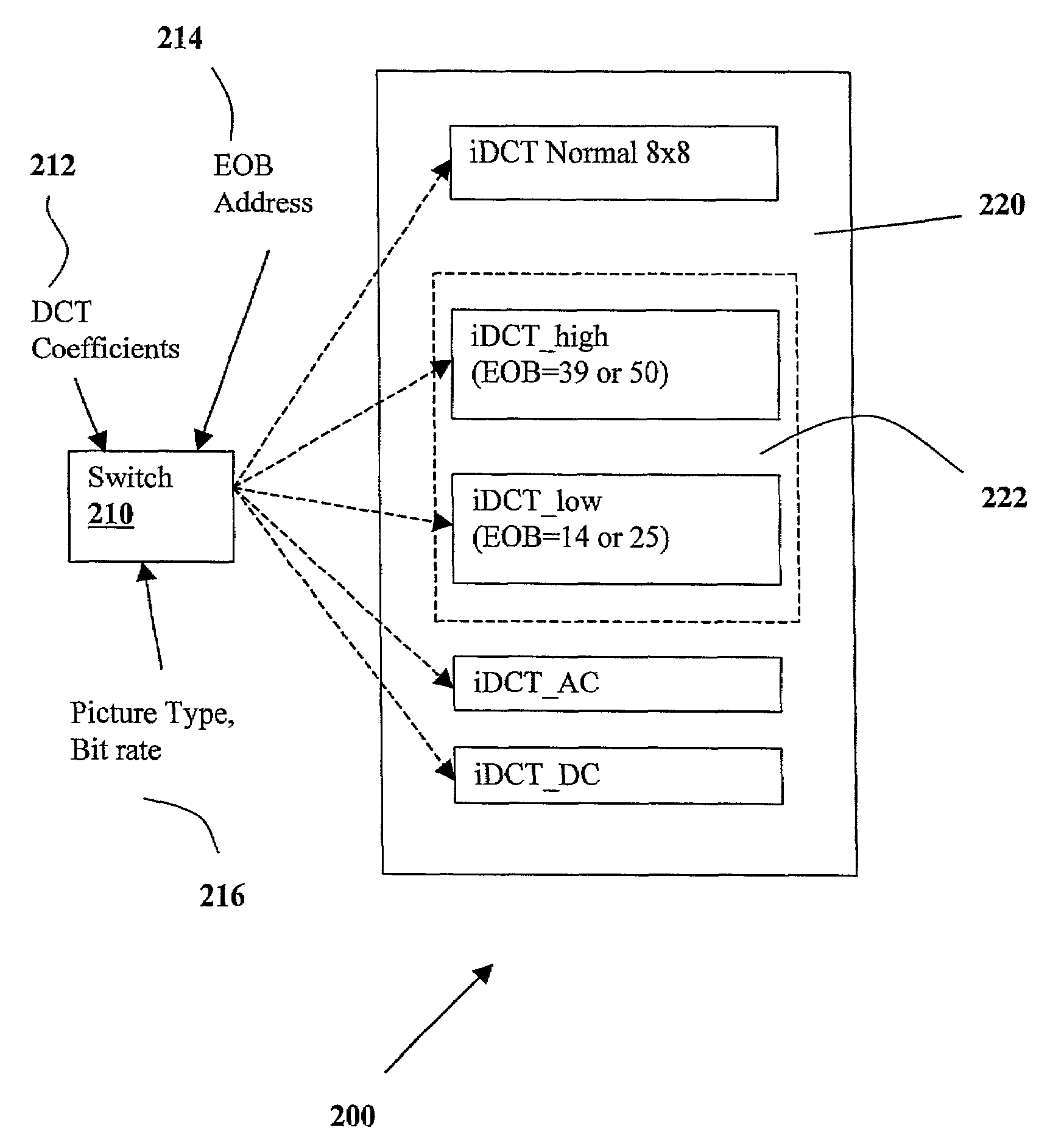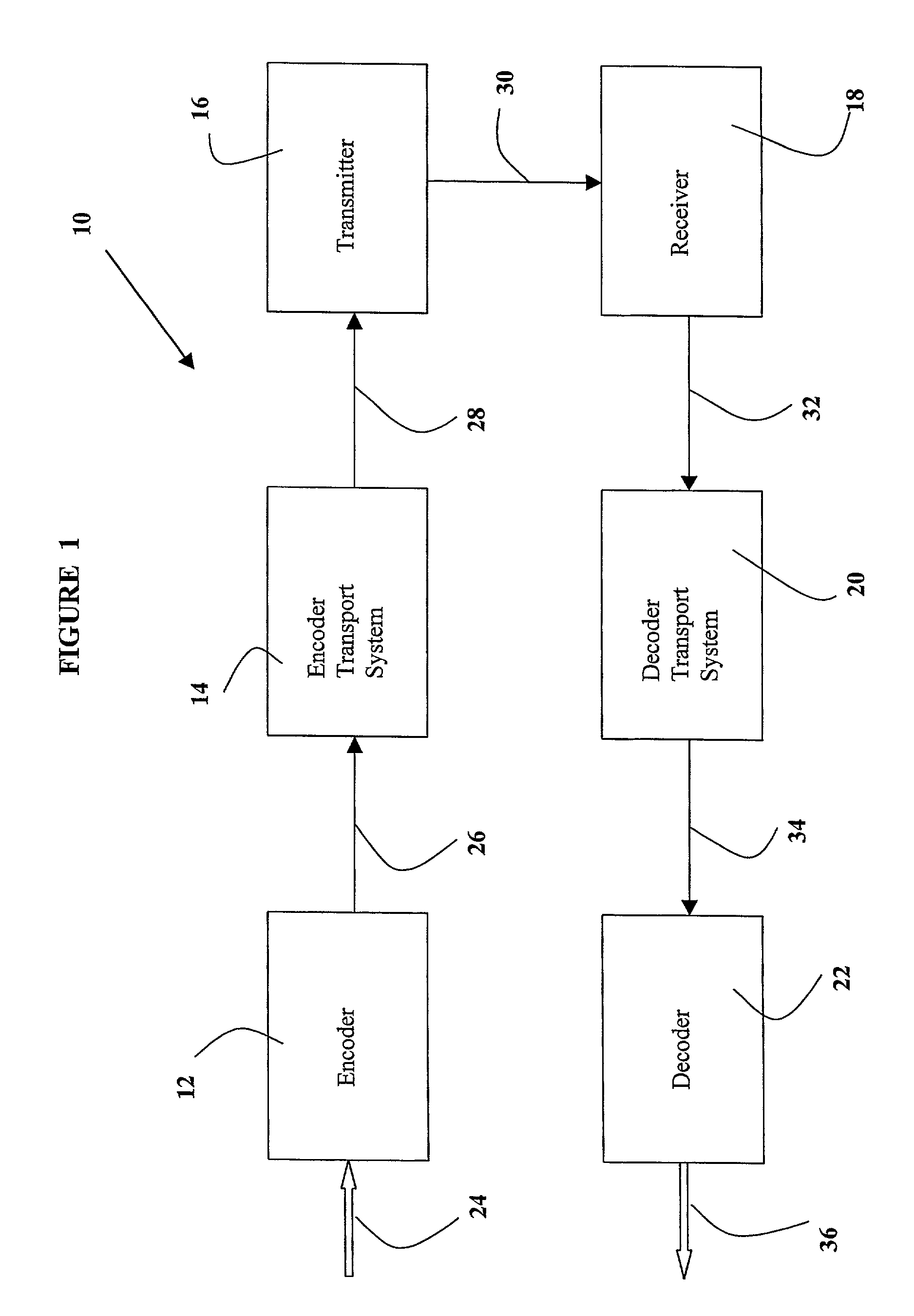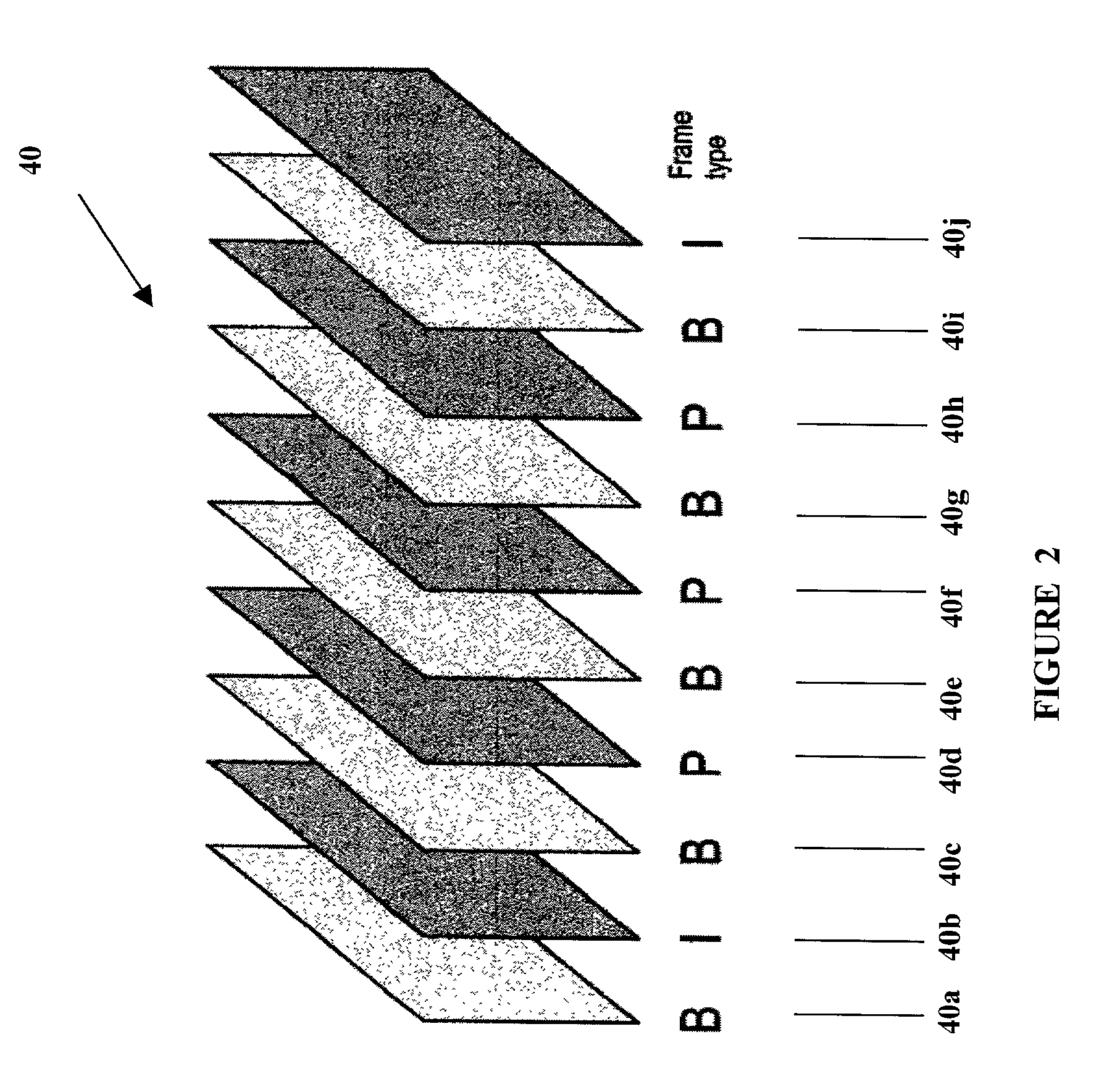Source adaptive system and method for 2D iDCT
a source adaptive system and source adaptive technology, applied in the field of systems and methods for the compression of digital images, can solve the problems of large amount of data required for creating high-definition digital images, limited resolution and format, etc., and achieve the effect of reducing the execution time of id
- Summary
- Abstract
- Description
- Claims
- Application Information
AI Technical Summary
Benefits of technology
Problems solved by technology
Method used
Image
Examples
Embodiment Construction
[0031]The transmission and reception of digital video requires complex hardware and software components. It is not the intent of this disclosure to address all such components but rather to address the specific areas within a digital video system in which the present invention may be utilized.
[0032]By way of introduction we refer first to FIG. 1, a generic digital video system, shown generally as 10. FIG. 1 is an overview of a generic system in which the present invention may be utilized. System 10 comprises encoder 12, encoder transport system 14, transmitter 16, receiver 18, decoder transport system 20 and decoder 22. Encoder 12 accepts as input source video 24. Source video 24 may come from a plurality of sources, but for the purpose of simplicity the reader may think of video source 24 as coming from analog sources such as a television transmission. Encoder 12 receives video source 24 and through the utilization of any number of compression algorithms translates video source 24 ...
PUM
 Login to View More
Login to View More Abstract
Description
Claims
Application Information
 Login to View More
Login to View More - R&D
- Intellectual Property
- Life Sciences
- Materials
- Tech Scout
- Unparalleled Data Quality
- Higher Quality Content
- 60% Fewer Hallucinations
Browse by: Latest US Patents, China's latest patents, Technical Efficacy Thesaurus, Application Domain, Technology Topic, Popular Technical Reports.
© 2025 PatSnap. All rights reserved.Legal|Privacy policy|Modern Slavery Act Transparency Statement|Sitemap|About US| Contact US: help@patsnap.com



